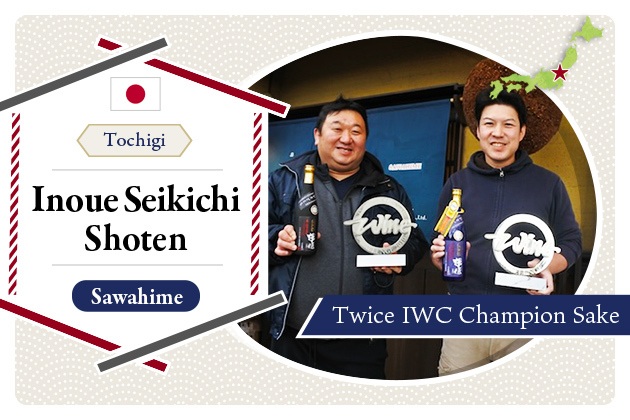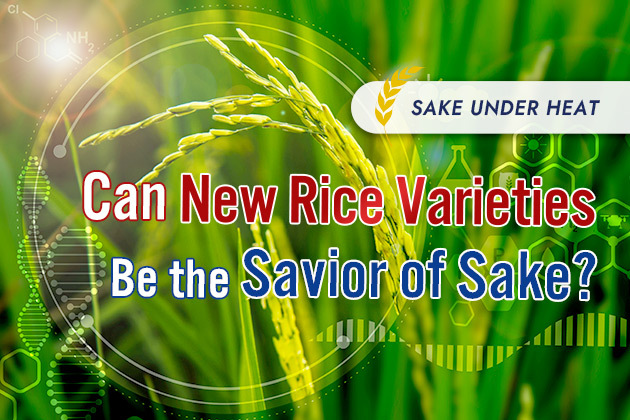
2020.02
13
The oldest in central Kyoto, the brewery fitted with the latest facilities and a global team – Matsui Brewery, Kyoto
A five minute walk from Demachiyanagi Station, Sakyo Ward, Kyoto City. It is an urban area where famous tourist spots such as Shimogamo Shrine, Yoshida Shrine and Kyoto Imperial Palace are located. Close to Kyoto University and on the ground floor of an apartment, mixed in with students and foreign tourists is where a sake brewery – the oldest in Kyoto at 300 years - Matsui Brewery, is located.
In fact, it was only in 2009 that Matsui Brewery resumed brewing here. We asked Mr. Jiemon Matsui, CEO of Matsui Brewery, of the story that led from its establishment to its reopening and on the passion that goes behind making Kagura.
The change of fate that sparked in law school and the revival of Kyoto's oldest sake brewery
– First, please tell us about the history of Matsui Brewery.
Matsui Brewery was founded in 1726 in Kasumi, Kinosaki-gun, Tajimaguni, now in Kazumi-cho, Hyogo. At the end of the Tokugawa period, it moved to Takeya-cho, Kawaramachi, Kyoto. It was about 100 years ago that the kura finally moved to its current place, towards the end of the Taisho era. At that time, there were about 3 sake breweries around here, and the water from a shallow well about 15m deep was used to brew the sake.
However, after the end of the war, the construction of railways and subways in Kyoto meant that the quality of the groundwater was changed. In addition to that, demand for sake began to decline, so it was decided to establish a joint company between several breweries and move to Fushimi to continue making sake.
– So, Mr. Matsui, you did not grow up as the "son of a brewery"?
No, my father worked at the joint company I explained earlier, but I grew up without a care for sake and studied law at university. Then just as I was deciding my path beyond graduate school in Tokyo, I received a sudden call from my father who told me, "We're reopening the brewery. Come home."
Since I was a getting a postgrad law degree, many of my friends around me were heading into a legal career. I also believed that would be my path up until my father contacted me, but at the same time, I did have an inherent interest in manufacturing, so I was torn.
However, upon hearing my father's words, **"There are many that can be a lawyer, but only you can make the sake of Matsui Brewery, I decided to go home to make sake." **– Until then you were a liberal arts major with no experience in making sake. How did you learn the craft of brewing?
From the time I returned home in 2008 I trained at Kizakura of Fushimi. Kizakura is a brewery with a hand-made sake called Misukura. It was there through actual work that I learned the process of hand making sake.
However, the Kizakura's brewing process involves division of labor and so in one cycle I could only learn a limited part of the entire process. I needed to learn the full process from end-to-end in a short period of time in order to become independent. So, whenever I had time, I would self-study by looking at the other stages of the process for example.
– After that, in 2009, the current brewery goes into manufacturing.
Originally, the training period was meant to have continued a little longer, but at the request of my father I returned to Matsui Brewery. While my father did work at a brewery, he was never in charge of manufacturing and with myself still having a lot to learn, we invited a craftsman toji (brewmaster) to the brewery.
It was under the direction of Mr. Ryozo Michitaka, a long-time toji at Sougen Sake Brewery in Ishikawa that I perfected the craft over three years. Mr. Michitaka is a craftsman with a 40-year history as a toji and from him I learned a lot. It was only in 2012 that I became my own toji.
Kizakura was also kind enough to help us analyze the sake we produced in the initial stages and has been immensely helpful even after I began working here. To this day, we maintain a good relationship. The large breweries of Fushimi are incredibly generous people.
A manufacturing facility of only 130m2, brewing that can be done only here
– How did you prepare the facilities of the brewery considering neither you nor your father had any brew experience?
A brewery, which had a rather small manufacturing facility happened to be closing at that time and I was able to buy it.
With only 130m2 of manufacturing facilities, at one point in time we were quite the model for people looking to restart a brewery with limited space and we had many visitors.
– How was the impact from the groundwater quality, which was originally one of the reasons for relocating?
Currently, we use water drawn from a depth of 50m, much deeper than previously. We have been able to select the location most suited to sake brewing via a thorough water quality analysis every 10m when we decided to revive the brewery. The water here is soft, with a characteristic like that in Fushimi.
– What is the current production volume in this space?
We make about 300 koku (1 koku is c.180 liters). Previously, we closed the brewery from July but from this season, we will be producing throughout the year to keep up with demand. We have five fermentation tanks, all of which are temperature controllable thermal tanks. The temperature inside the brewery is also controlled by air conditioning. After pressing, the sake is stored in four storage tanks controlled at a temperature of -2˚C to -5˚C.
Oftentimes people mistakenly think that we have an automated process, because of the equipment we use. But that is not the case. We only use the machine in order to heighten the quality.
I think temperature control is a good example of a task that is better done by machines than humans. When done by humans, it can be difficult to control to the nearest 0.1˚C. However, the machine can easily do this, and for 24 hours.
This also means that we never use machines to make the workload easy for humans. We carry the steamed rice manually ourselves, rather than use a pneumatic tube for example.
– It seems that you need to get quite creative to fit everything in a space as compact as this.
When visitors come, I think many expect an impressive building with clapboards and a white wall. I hate to disappoint these people. And so, we have tried to create other things under the concept "only here" for a sake brewing tour that cannot be had elsewhere.
For example, the koji room uses stainless steel walls. This comes from a place of hygiene. This along with other parts of the kura, I think is the best in class in Japan in terms of hygiene and quality control.
Also, about 60% of the power used for production is generated by solar power. Because the temperature is controlled in the brewery and the tanks throughout the year, this space uses energy equivalent to a medium-sized brewery. Since I realize this is a large consumption of energy, I try to reduce the environmental burden as much as possible.
There is a catch copy called "Bishu Nichirin no Gotoshi" in Kagura. This translates to "delicious like the sun", but it is also a reference to the solar power.
– What sort of sake do you envision Kagura to be?
Firstly, the balance between aroma and taste must both be maintained at a high level. In sake brewing, there is a trade-off between aroma and taste. To put it bluntly, this is what rice polishing is. But I want to attain both - like combining the fragrance of a Daiginjo with the rich taste of a Junmai. It may be due to my stubborn nature, I am afraid!
Secondly, I want even first-timers to try sake to find it delicious. Given its location, Matsui Brewery is also popular with foreign tourists. If those who try sake for the first time don’t find it to be delicious, they may never have a sake for the next tens of years! With that in mind, I am very careful to create a sake that can be enjoyed by someone trying sake for the very first time.
English as the official language. Onwards for a global team and global sales!
– How many employees do you have for manufacturing?
Four in total – myself, two other Japanese employees and George from the US. I and one other can speak English, while George is currently learning Japanese and so most communication on manufacturing is done in English.
– English! It is basically a modern tech company.
I manage the work so that working hours are from 9 am to 6 pm. In the busy season, sometimes there is a little overtime, but for the most part, we manage to stay within these hours. There are many areas in traditional craftsmanship where the working environment is harsh. There are traditions to be protected but we must not hide behind the pretense of "tradition" to let bad habits be.
– There are many foreign tourists visiting the tasting area and shop.
Yes, about 70% of the customers who visit here are from overseas. They seem to find out about this place on the Internet as having English guided tours. At the time of the Rugby World Cup, almost all of them were foreign tourists and I am very grateful to have George to do the English tours. For the past two months, I have been putting stickers on the world map to show where the visitors are from…
– Zimbabwe, Brazil, Qatar… It really has filled up with people from all corners of the globe!
People from countries that already have a sticker may not necessarily mark it again, so the actual number of visitors is much higher than this.
Recently, exports have been picking up little by little. For the domestic market, we tend not to pasteurize (hi-ire) but for the overseas market, we pasteurize them. To that extent, we have also introduced a pasteurizer as a new equipment from this year.
– With year-round brewing, sales volume must be increasing. Will the manufacturing facility be expanded in the future?
There are many factors to consider such as the existing facilities and the difficulty of finding space, but in the future, I would like to expand the manufacturing facility, yes.
Summary
Kagura is a well-balanced sake that is clear yet rich in taste, with a floral and refined scent.
While cherishing the long history and traditions of brewing, the work style and technologies are undeniably new. It seems that Mr. Matsui's sense of balance in everything he does is reflected in the balance of taste and aroma in his sake styles.
Matsui Brewery now has sales channels overseas. Listening to the decade long path from the reopening to now, I cannot wait to find out what the next decade has in store for the next leg of their journey.
関連商品
Pickup Articles
2019.01.18
2019.01.25
Trending Articles
Popular Articles
Recent Articles













